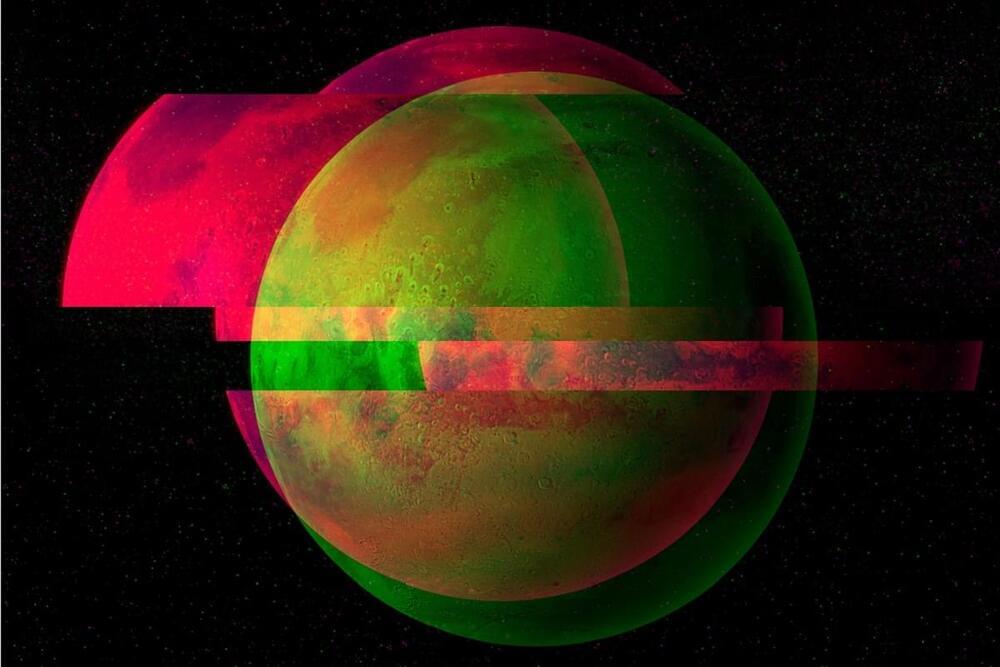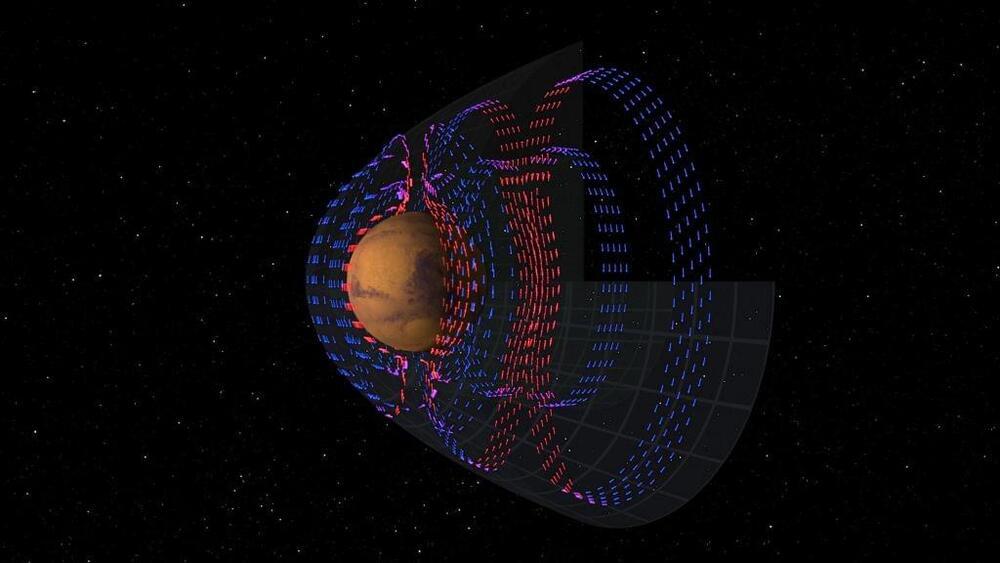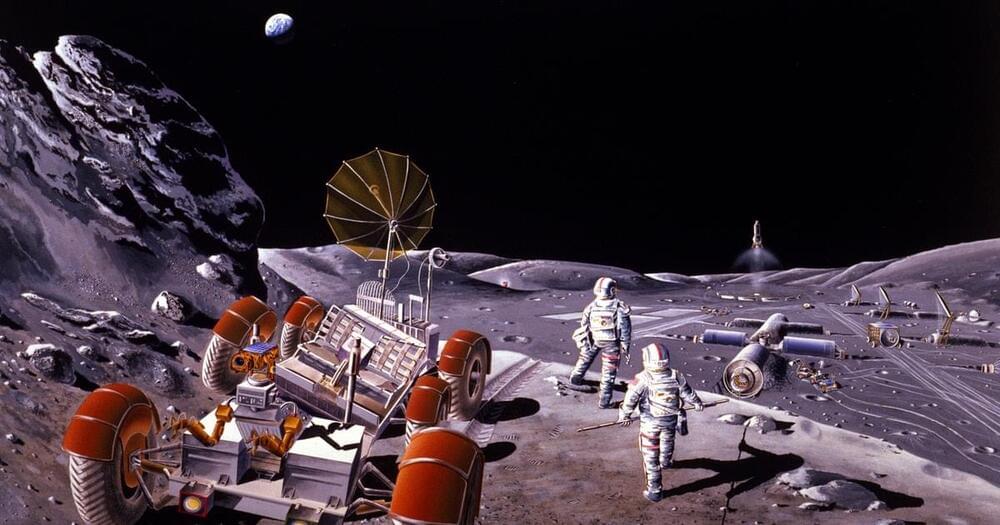Light is fast. In fact, it is the fastest thing that exists, and a law of the universe is that nothing can move faster than light.




Terraforming Mars is one of the great dreams of humanity. Mars has a lot going for it. Its day is about the same length as Earth’s, it has plenty of frozen water just under its surface, and it likely could be given a reasonably breathable atmosphere in time. But one of the things it lacks is a strong magnetic field. So if we want to make Mars a second Earth, we’ll have to give it an artificial one.
The reason magnetic fields are so important is that they can shield a planet from solar wind and ionizing particles. Earth’s magnetic field prevents most high-energy charged particles from reaching the surface. Instead, they are deflected from Earth, keeping us safe. The magnetic field also helps prevent solar winds from stripping Earth’s atmosphere over time. Early Mars had a thick, water-rich atmosphere, but it was gradually depleted without the protection of a strong magnetic field.
Unfortunately, we can’t just recreate Earth’s magnetic field on Mars. Our field is generated by a dynamo effect in Earth’s core, where the convection of iron alloys generates Earth’s geomagnetic field. The interior of Mars is smaller and cooler, and we can’t simply “start it up” to create a magnetic dynamo. But there are a few ways we can create an artificial magnetic field, as a recent study shows.

Learn More.
Bright Side.
Something bizarre found on the Moon has scientists speechless.
Find out how much good is going on in the world.
Our site is dedicated to creativity. We made Bright Side to help nurture the seeds of creativity found in all of us. We believe imagination should be at the heart of everything people do. Bright Side is the place to find the most inspiring manifestations of this from around the world.

Want AI that can do 10 trillion operations using just one watt? Do the math using analog circuits instead of digital.
There’s no argument in the astronomical community—rocket-propelled spacecraft can take us only so far. The SLS will likely take us to Mars, and future rockets might be able to help us reach even more distant points in the solar system. But Voyager 1 only just left the solar system, and it was launched in 1977. The problem is clear: we cannot reach other stars with rocket fuel. We need something new.
“We will never reach even the nearest stars with our current propulsion technology in even 10 millennium,” writes Physics Professor Philip Lubin of the University of California Santa Barbara in a research paper titled A Roadmap to Interstellar Flight. “We have to radically rethink our strategy or give up our dreams of reaching the stars, or wait for technology that does not exist.”
Lubin received funding from NASA last year to study the possibility of using photonic laser thrust, a technology that does exist, as a new system to propel spacecraft to relativistic speeds, allowing them to travel farther than ever before. The project is called DEEP IN, or Directed Propulsion for Interstellar Exploration, and the technology could send a 100-kg (220-pound) probe to Mars in just three days, if research models are correct. A much heavier, crewed spacecraft could reach the red planet in a month—about a fifth of the time predicted for the SLS.



NASA ’s Laser Communications Relay Demonstration (LCRD) will use laser communications systems to transmit data from space to Earth. Below are six things you need to know about NASA’s revolutionary LCRD mission.
1. Laser communications will transform how NASA gets info to and from space.
Since the dawn of space exploration, NASA has used radio frequency systems to communicate with astronauts and spacecraft. However, as space missions generate and collect more data, the need for enhanced communications capabilities increases. LCRD leverages the power of laser communications, which uses infrared light rather than radio waves, to encode and transmit information to and from Earth.

Did you see the full “Beaver Moon?” Here it is, captured by photographers around the world as our satellite rose spectacularly—and from some locations was eclipsed by the Earth.
If you were in Europe it looked liked any other rising full Moon—spectacular, for sure, though nothing out of the ordinary… if you can call a glowing orbiting orb “ordinary.”
For those in North America, Australia, and eastern Asia the full Moon went a copper-reddish color at all but a slither of its surface entered Earth’s shadow in space.

Freshwater is scarce in many parts of the world. While currently there is enough fresh water on earth to support consumption, it is not available in a way where supply meets demand. To solve this issue, engineers at ETH Zurich have developed a new device that can harvest drinking water 24 hours around the clock, with no energy input, even under the blazing sun.
It consists of a specially coated glass pane, which both reflects solar radiation and also radiates away its own heat through the atmosphere to outer space. The resulting device thus cools itself down to as much as 15 degrees Celsius below the ambient temperature. At the bottom of the pane, the moisture in the air condenses into the water which is collected.
The glass pane is coated with layers of a specially designed polymer and silver, which allows it to firstly reflect sunlight away to prevent it from heating up. The coating causes the pane to emit infrared radiation at a specific wavelength window to the outer space, with no absorption by the atmosphere nor reflection back onto the pane.